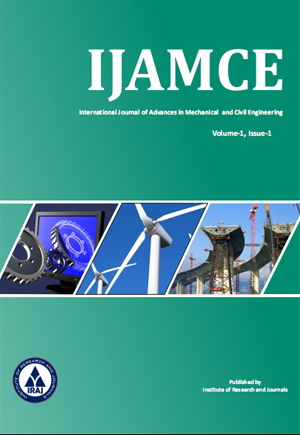Publish In |
International Journal of Advances in Mechanical and Civil Engineering (IJAMCE)-IJAMCE |
 Journal Home Volume Issue |
||||||||
Issue |
Volume-4,Issue-2 ( Apr, 2017 ) | |||||||||
Paper Title |
Application of the CFD Modeling to Evaluate the Heat Insulation Effect of the Groundwater Cooling System on Buildings | |||||||||
Author Name |
Ting-Yu Chen, Hsin- Hua Wu, Wen-Pei Sung | |||||||||
Affilition |
Department of Landscape Architecture, National Chin-Yi University, Taichung, Taiwan | |||||||||
Pages |
41-45 | |||||||||
Abstract |
Normally, the water sources under the earth’s surface are called underground water which is clean and constant in temperature. The common issues about underground water include the use of underground water in the industry/breeding/agriculture, the prevention of land subsidence, sponge city, and the treatment of the pollution to underground water sources. In face of the soaring demand for energy and the ever fewer resources around the world, some experts and scholars have proposed a new idea to use underground water – making use of the constant temperature of ground water: in summer, the relatively cool underground water pipes can be used to eliminate the heat in the space and reduce the use of air conditioners; in winter, the relatively warm underground water can be used to create a comfortable space temperature and reduce the demand for the energy for heating. An appropriate adjustment and application of underground water can create a comfortable living space and save energy; thus, it is a feasible scheme for economic sustainability and environmental protection. In this study, two experiment rooms were established in an all-sunlight environment for small pilot tests of the underground water cooling system; some temperature monitoring points were set in the experiment rooms; an outdoor mini weather station was established to measure the outdoor weather; a 60-meter deep functional well was built to for a long-term measurement of the temperature of underground water, and it was integrated with the underground water cooling system to find out the best flow (0.1m3/h). As for the collection of the conditional parameters, the conditional setting for the computer flow field analysis was offered so as to make a more accurate simulation of an overall thermal environment. Fluent– CFD (Computational fluid dynamics, CFD) adopted in the study could simulate the temperature transmission among the sun, the underground water cooling system as well as the indoor and outdoor space. According to research results of the all-sunlight environment, this study analyzed the thermal effects of the transmission of heat from an outdoor environment to an indoor one and evaluated the setting of the underground water cooling system, with the hope of finding out the main conditions for improving the thermal environment and enhancing comfort as well as giving substantial information to design or management institutions. Keywords: Ground Water Cooling System, Pilot Test, Energy Conservation, Comfort | |||||||||
| View Paper | ||||||||||